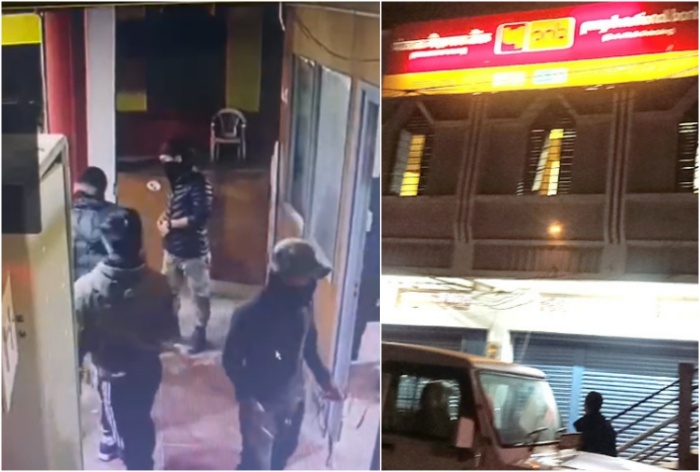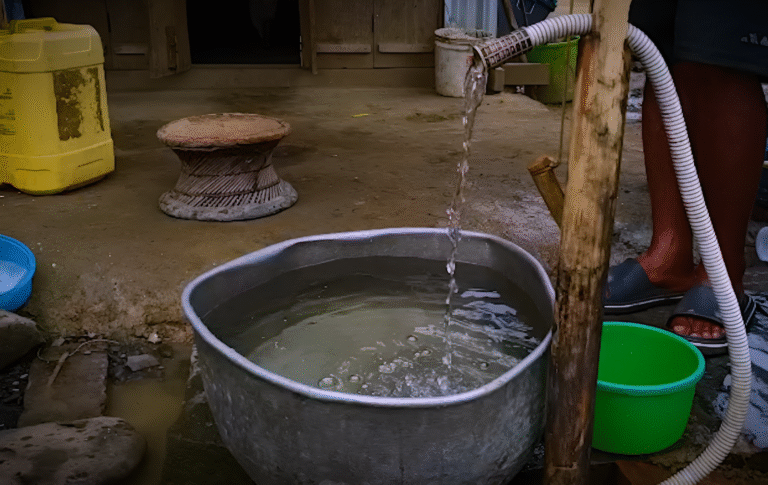Manipur Police Arrest Two KYKL MDF Cadres and Seize Arms and Ammunition: A Bold Step Towards Securing the Future
Introduction
Have you ever felt the weight of uncertainty when news of militant activity surfaces in your community? Recently, the Manipur police made a strong statement by arresting two cadres from the KYKL MDF and seizing a large cache of arms and ammunition. This development is not just a routine law enforcement operation—it’s a critical stride towards ensuring safety and stability in the region. In this article, we’ll break down the incident, explore the investigative process, and discuss its broader implications for regional security, all in a style that’s both engaging and easy to understand.
Understanding the Regional Context and Militant Threats
Manipur is known for its vibrant culture and scenic beauty, yet it also faces complex challenges due to the activities of militant groups. Groups like the KYKL MDF have, at times, operated under the radar, posing significant threats by hoarding illegal arms and engaging in disruptive activities. Imagine your neighborhood suddenly under the threat of armed militancy—it’s like a peaceful garden being invaded by relentless weeds that choke the life out of its beauty. This operation by the police is a vital weed-removal effort, aiming to restore safety and order.
The presence of armed militants affects not only security but also the economic and social fabric of the region. When residents are caught in the midst of such turmoil, the overall trust in the system declines, and community development takes a back seat. Therefore, any decisive action that curbs this menace is a welcome change for the people of Manipur.
The Operation: Arrests and Seizure of Arms
So, what exactly happened? In a meticulously planned operation, the Manipur police successfully arrested two cadres associated with the KYKL MDF and confiscated a substantial amount of arms and ammunition. The operation was the result of a combination of persistent intelligence gathering, community tips, and modern surveillance techniques. Let’s take a closer look at how it unfolded:
- Targeted Intelligence Gathering: The police had been monitoring the activities of the KYKL MDF for some time. Using both traditional methods and cutting-edge technology, they gathered crucial intelligence that pinpointed the location of the militants. Think of it as putting together a jigsaw puzzle where each piece of information brought the full picture into focus.
- Coordinated Raids: Once the location was confirmed, law enforcement teams executed a coordinated raid. The aim was to apprehend the suspects quickly and safely before they could destroy evidence or flee. This operation was as precise as a well-oiled machine, ensuring that every move was calculated for maximum impact.
- Seizure of Weapons and Ammunition: Alongside the arrests, the police seized a large cache of arms and ammunition. This included both small arms and heavier weaponry, all of which are considered dangerous in the wrong hands. Removing these weapons from circulation is like taking the batteries out of a remote control—without power, the threat is significantly diminished.
- Community Collaboration: A key factor in the success of this operation was the cooperation of local residents. Their willingness to share information allowed the police to act swiftly and effectively. This shows how community engagement can be a force multiplier for law enforcement.
Why This Operation Matters
You might ask, “Why is this operation such a big deal?” The answer lies in the broader impact on regional security. The arrest of these militants and the seizure of arms have several far-reaching implications:
- Enhanced Public Safety: Removing dangerous weapons from the streets directly reduces the risk of violent incidents. When communities feel secure, their quality of life improves significantly.
- Deterrence of Future Crimes: Successful operations like this send a clear message to other militant groups—that law enforcement is vigilant and capable. It’s akin to putting up a strong fence that discourages intruders.
- Boosting Community Trust: When residents see tangible actions taken by the authorities to ensure their safety, it helps rebuild trust between the community and law enforcement agencies. This trust is the foundation upon which long-term security is built.
- Economic and Social Benefits: Stability and security attract investment and foster economic growth. Businesses can operate without the constant fear of disruption, and families can focus on their well-being and community development.
The Role of Modern Technology in the Operation
In today’s digital age, technology plays a pivotal role in law enforcement. In this operation, several advanced tools and techniques were at work:
- Digital Forensics: By analyzing data from mobile devices and social media, investigators could trace the movements and communications of the suspects. This digital trail is often the smoking gun in modern investigations.
- Surveillance Systems: Real-time monitoring through CCTV cameras and drones provided critical situational awareness. These systems acted as the eyes in the sky, ensuring that no movement went unnoticed.
- Data Analytics: With the help of sophisticated data analytics tools, the police were able to predict and pinpoint the hotspots of militant activity. This proactive approach is like having a weather forecast that warns you before the storm hits.
- Integrated Communication Networks: The operation was marked by seamless communication among different units. This ensured that every team was on the same page, contributing to the swift and efficient execution of the raid.
Challenges in Combating Militancy in Manipur
While this successful operation is a significant achievement, it also sheds light on the challenges that law enforcement faces in regions like Manipur. Some of the key hurdles include:
- Rugged Terrain: Manipur’s geographical features, with its hilly areas and dense forests, provide natural hideouts for militants. Conducting operations in such terrain is like navigating through a maze with many dead ends.
- Sophisticated Networks: Militant groups today are not what they used to be. They operate with a level of sophistication that makes them difficult to track. Their networks are often well-organized, making it challenging to dismantle them completely.
- Resource Constraints: Despite best efforts, law enforcement agencies sometimes struggle with limited manpower and technological resources. This constraint can slow down operations and make it harder to maintain a constant vigil.
- Community Mistrust: In some cases, past experiences have led to a sense of distrust towards government authorities. Overcoming this requires continuous efforts to build relationships and prove that the authorities are working for the community’s benefit.
Implications for Regional Security
The impact of this operation extends far beyond the immediate arrests and seizure of arms. It has broader implications for regional security and the fight against militancy:
- Strengthening Law Enforcement: Each successful operation reinforces the capability and credibility of the police. It builds a reputation that can deter future criminal activities and encourage community support.
- Policy Reforms: Incidents like this often serve as catalysts for policy changes. Governments may look to invest more in technology, training, and community outreach programs to further enhance security measures.
- Enhanced Intelligence Sharing: The success of the operation underscores the importance of sharing intelligence among different agencies. Improved coordination between local, state, and even national bodies can lead to more effective counter-insurgency strategies.
- Regional Cooperation: Security challenges often transcend borders. This operation could pave the way for increased cooperation with neighboring regions facing similar issues, leading to a more unified approach in combating militancy.
Community Impact and the Human Element
While tactical details and technological advancements make for impressive headlines, it’s the human impact that truly resonates. Think of a community that has been living under a cloud of fear—every act of violence sends ripples of anxiety through the streets. The arrest of these militants and the seizure of arms is a beacon of hope for many. It reassures residents that their lives and their loved ones are being protected.
- Restoring Faith: For many, the feeling of insecurity can be paralyzing. When they see proactive measures being taken, it restores their faith in the system. It’s like witnessing the first rays of sunlight after a long, dark night.
- Empowering Citizens: When communities are actively involved in ensuring their own safety, they become empowered. Knowing that they have a role in reporting suspicious activities and supporting law enforcement creates a sense of collective responsibility.
- Healing Wounds: In regions where violence has taken a toll, every successful operation contributes to the healing process. It’s a step toward closing a painful chapter and opening a door to a future filled with promise.
Economic Ramifications: A Safer Environment Spurs Growth
Security and economic prosperity are two sides of the same coin. When a region is secure, businesses thrive, and investments flow in. The ripple effects of this operation on the local economy can be substantial:
- Business Confidence: Entrepreneurs are more likely to invest in areas where the threat of violence is minimized. A stable environment encourages growth and innovation, leading to job creation and improved livelihoods.
- Tourism Potential: Manipur is rich in culture and natural beauty. Enhanced security can boost tourism, as visitors feel safe to explore the region. This, in turn, can lead to increased revenue for local communities.
- Infrastructure Development: With improved security, the focus can shift toward infrastructure development. Better roads, schools, and hospitals contribute to the overall quality of life, making the region more attractive for long-term investments.
- Social Upliftment: Economic development often leads to social upliftment. As businesses grow and employment opportunities expand, the standard of living rises, reducing the likelihood of individuals turning to extremist ideologies out of economic desperation.
The Future of Counter-Insurgency Operations in Manipur
What does the future hold for Manipur in light of this operation? While challenges remain, this arrest sets a strong precedent for future counter-insurgency measures. Here are some prospects:
- Continued Investment in Technology: Law enforcement agencies are likely to further integrate advanced technologies in their operations, from enhanced surveillance to improved digital forensics. This ongoing evolution will help keep militants on the run.
- Stronger Community Ties: Building robust relationships between the police and the local communities will be a key focus. When residents and law enforcement work hand in hand, it becomes much harder for militants to find safe havens.
- Policy and Legislative Reforms: The government may implement stricter laws and faster judicial processes to deter potential offenders. These reforms can act as a solid framework that supports rapid and effective responses.
- Regional and International Collaboration: Counter-insurgency is a global challenge. Enhanced collaboration with neighboring regions and international agencies can bring in fresh perspectives and resources, creating a multi-layered defense against extremism.
Learning from Past Operations: What Worked and What Can Be Improved
Every operation provides valuable lessons. Reflecting on this recent success can help shape future strategies:
- What Worked:
- Precision and Timing: The coordinated raid, backed by accurate intelligence, was a textbook example of effective law enforcement.
- Use of Technology: Advanced digital forensics and real-time surveillance played a crucial role in tracking the militants.
- Community Involvement: The willingness of residents to share information helped bridge gaps in intelligence.
- Areas for Improvement:
- Expanding Resources: Continued investment in manpower and technology is needed to sustain long-term operations.
- Strengthening Legal Support: Faster judicial processing and harsher penalties for insurgency-related activities could deter future crimes.
- Enhanced Training: Regular training sessions for law enforcement to adapt to evolving militant tactics will keep them better prepared.
A Call to Action: The Role of Every Citizen
The fight against militancy is not just the responsibility of law enforcement—it’s a collective effort. Every member of the community has a role to play in creating a safe environment. Here’s how you can contribute:
- Stay Informed: Knowledge is power. Keep up with local news and understand the measures being taken to ensure your safety.
- Report Suspicious Activities: If you notice anything out of the ordinary, don’t hesitate to report it to the authorities. Your tip could be the key to preventing a crime.
- Participate in Community Meetings: Engaging with local leaders and law enforcement fosters a sense of unity and shared responsibility.
- Support Local Initiatives: Whether it’s through volunteering or spreading awareness, every little effort counts in building a resilient community.
- Advocate for Change: If you feel that more can be done, use your voice to advocate for better policies and more robust security measures.
Conclusion: Paving the Way to a Safer Manipur
The arrest of two KYKL MDF cadres and the seizure of arms and ammunition marks a pivotal moment in Manipur’s ongoing battle against militancy. It’s a reminder that through unwavering determination, modern technology, and robust community engagement, even the most complex security challenges can be tackled head-on. While the journey towards complete security is long, every decisive step contributes to a brighter, safer future for the people of Manipur. Together, by staying vigilant and supporting proactive measures, we can all be part of the change that transforms our communities into sanctuaries of peace and prosperity.
FAQs
- What led to the arrest of the two KYKL MDF cadres in Manipur?
The arrest was the result of a coordinated operation that combined detailed intelligence gathering, community cooperation, and advanced surveillance techniques to pinpoint the militants’ location. - How did technology contribute to this successful operation?
Modern tools such as digital forensics, real-time surveillance, and data analytics played a crucial role in tracking the movements of the militants and gathering evidence for their arrest. - What impact does seizing arms and ammunition have on regional security?
Removing a large cache of arms and ammunition from the militants significantly reduces the threat of violence, deters future criminal activities, and enhances overall public safety. - How are local communities involved in maintaining security in Manipur?
Communities are encouraged to share information, report suspicious activities, and engage with local law enforcement, which builds trust and aids in faster, more effective responses to potential threats. - What future measures are planned to further combat militancy in the region?
Future initiatives include increased investment in technology, stronger community engagement, legislative reforms, and enhanced regional cooperation to create a robust security framework.




